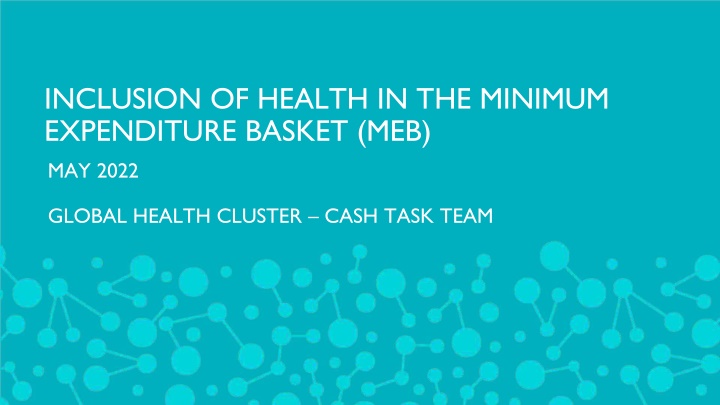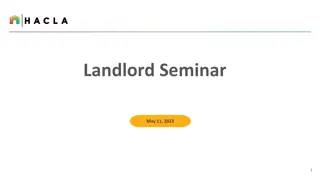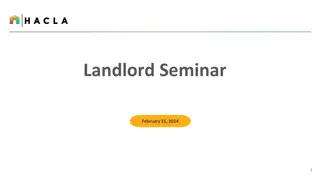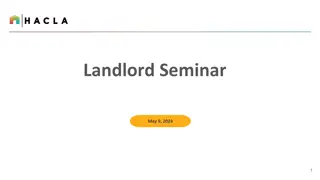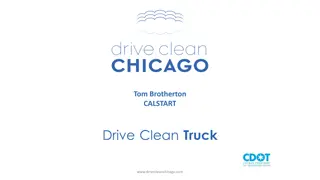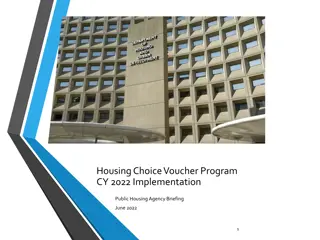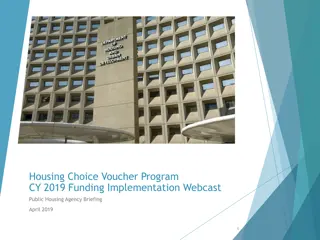Cash and Voucher Assistance in Health: Impact and Importance
Cash and Voucher Assistance (CVA) plays a crucial role in overcoming financial barriers to accessing health services. By using Tanahashi Framework, CVA approaches address various obstacles to health including service delivery, quality assurance, equity, and financial protection. Health needs are prioritized in expenditure baskets, reflecting the significance of healthcare expenses. CVA improves health service accessibility, quality, and affordability, contributing to the overall wellbeing of individuals. Cash transfers, vouchers, and conditional cash transfers are some strategies within the CVA for health outcomes continuum.
Download Presentation

Please find below an Image/Link to download the presentation.
The content on the website is provided AS IS for your information and personal use only. It may not be sold, licensed, or shared on other websites without obtaining consent from the author.If you encounter any issues during the download, it is possible that the publisher has removed the file from their server.
You are allowed to download the files provided on this website for personal or commercial use, subject to the condition that they are used lawfully. All files are the property of their respective owners.
The content on the website is provided AS IS for your information and personal use only. It may not be sold, licensed, or shared on other websites without obtaining consent from the author.
E N D
Presentation Transcript
INCLUSION OF HEALTH IN THE MINIMUM EXPENDITURE BASKET (MEB) MAY 2022 GLOBAL HEALTH CLUSTER CASH TASK TEAM
HOW DO CVA FOR HEALTH APPROACHES IMPACT BARRIERS TO HEALTH? USING TANAHASHI FRAMEWORK: Service Delivery Goal (ensuring the right to health for all) Referrals Effective Coverage Quality assurance (people who receive services of sufficient quality) Adherence to treatments Access to medicines Contact Coverage (people who actually use the health services) Equity of utilisation Financial protection Acceptability Coverage (people who are willing to use the health services) Coverage curve Accessibility Coverage (people who are able to use the health services) Financial barriers to care Availability Coverage (people for whom health services are available) Leveraging public & private health service capacity People of Concern (the target population) Targeting Factors potentially addressed by different CVA modalities
WHY IS CVA AND HEALTH IMPORTANT? Health needs are different from other sectoral needs. PDM s and household expenditure surveys consistently reflect health related expenditures as 1stor 2ndexpenditure. Households delay seeking c r e d e high OOP health costs even a where is policies in place to reduce these costs. CVA can and has the potential to improve access to health services by reducing the financial barriers to accessing these services (which can be both direct or indirect financial barriers). u t o the
HOW CAN CVA IMPACT BARRIERS TO HEALTH? Cash & vouchers can be useful to improve access to and to improve access to and utilisation of health services utilisation of health services in humanitarian settings, by reducing direct and indirect financial barriers and/or by incentivising the use of free preventive services (demand-side barriers). CVA also has the potential to contribute to monitoring and improving quality of services (vouchers).
CVA FOR HEALTH OUTCOMES CONTINUUM: Cash transfers provided in advance for specific health needs Conditional cash transfers (i.e. cash provided after taking an action) Vouchers for specific health care (i.e. obstetric care) Value vouchers (i.e. vouchers with a financial ceiling) Figure 1: The CVA for health outcomes continuum
UNDERSTANDING HEALTH EXPENDITURES: Financial Barriers Direct cost Indirect costs
HEALTH IN MEB, OR NO HEALTH IN MEB? Some argue that as health services should be provided for free, there should not be a health component in the MEB. However, household expenditure surveys consistently show substantial expenditures on health, even in contexts where policy and programming mean there should be free services. Including health needs in the MEB does NOT mean that CVA is the best way to address health needs: o It does not automatically mean that MPC is the best way to address the need. o It just acknowledges that health is a priority basic need for families, and that they have expenditures related to it. o We then need to analyse further for what, when and where, to chose the best option to address these expenditures and the barriers they are likely to impose.
HOUSEHOLD EXPENDITURE SURVEYS: Reflection of the real health related expenditures however may not reflect indirect costs such as transportation child-care during illness, loss of income etc. Health expenditure surveys do not necessarily reflect the real need for utilization of health services. The amount for health expenditures estimated through household expenditure surveys provide a practical reference for its inclusion in the MEB.
HOW TO DETERMINE THE HEALTH EXPENDITURES IN THE MEB: Three Three Technical Approaches Technical Approaches 1. Based on the costing of a high priority package of health services, adapted to the humanitarian context: Best example is the amount of a premium household pay for health insurance, adding indirect expenditures and possible services not covered. 2. Based on household expenditure survey. 3. If either of those are not possible determining health expenditure as a dynamic and optimal portion of the MEB in partnership with the Health Cluster.
1. COSTING OF A HIGH PRIORITY PACKAGE OF HEALTH SERVICES A.Informed by a health system assessment, which should then lead to the definition of the essential services that are needed and the average costs for it. B. Such adapted HPP can then be costed, and thus translated in an average cost per person per year, and can be used as a reference. However indirect costs will have to be considered and assessed.
2. HOUSEHOLD EXPENDITURE SURVEYS A.Perhaps the best and most accurate approach because it s embedded in actual expenditure data and includes direct and indirect costs. B. Can determine catastrophic expenditures (>10% and >25%, respectively of the total household expenditure related to health). C.Health expenditure surveys may underestimate what the poor really need from health services. Why? Because the poor cannot afford health services so delay seeking health care: poor households have lower expenditures than richer households, though their needs generally higher.
3. HEALTH EXPENDITURE AS A DYNAMIC AND OPTIMAL PORTION OF THE MEB A. Least preferred option only use as a last resort. B. The proportion of the MEB for health should be less than 10% of the total MEB and higher than 3-4% as households always have expenditures (e.g. self medication, etc). C. Then adapted upward or downward based on results from PDM.
FROM MEB TO RESPONSE OPTIONS How can health needs and the household expenditures for health as How can health needs and the household expenditures for health as reflected in the MEB reflected in the MEB best be met? best be met? Pay health services to look after patients! The optimal response Pay health services to look after patients! The optimal response option for reducing direct health costs is to first explore provider option for reducing direct health costs is to first explore provider payment mechanisms that will reduce the application of user fees. payment mechanisms that will reduce the application of user fees. Making sure that there are available and affordable health services reduces the need for households to pay for health services from their monthly income, then the proportion of unmet need that remains should be low (and be mostly indirect costs e.g. transport). Failing to maintain, rebuild or improve health services and focusing on MPC as a response would - inadvertently - contribute to a fee-charging culture for priority services, this undermines financial protection for health and progress towards universal health coverage.
STEPS FOR DETERMINING THE APPROPRIATE RESPONSE: Steps Steps Can CVA help Can CVA help 1. 1. Assess barriers Assess barriers determine what the determine what the barriers to health services are barriers to health services are 1. 1. Optimal response is ensuring Optimal response is ensuring AVAILABILITY of services AVAILABILITY of services 1. 1. Once available, Once available, 2 2nd response is to ensure that households have physical ensure that households have physical ACCESS to the health facilities ACCESS to the health facilities Tools Tools Health surveys Household surveys - - Health surveys Household surveys Health surveys Household surveys - - CVA cannot do anything to resolve physical - access especially in the context of conflict ndresponse is to - Health surveys Household surveys PDM 1. 1. Once physical access is ensured Once physical access is ensured assess FINANCIAL ACCESS FINANCIAL ACCESS assess CVA here can provide transportation CVA can also be provided to access health services via voucher CVA can incentivize change in behavior - - - 1. 1. Assess CULTURAL access Assess CULTURAL access 1. 1. If households are still not using health If households are still not using health services and report barriers services and report barriers re barriers to health services barriers to health services re- -assess assess
WHERE CAN YOU FIND OUT MORE? CALP has a series of webinars on cash and voucher assistance and health. Sign up to our newsletters, follow us on YouTube or other channels to find out more.
THANK YOU for listening
